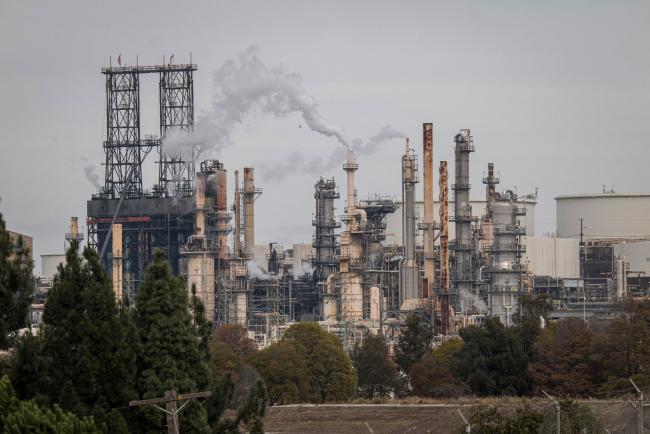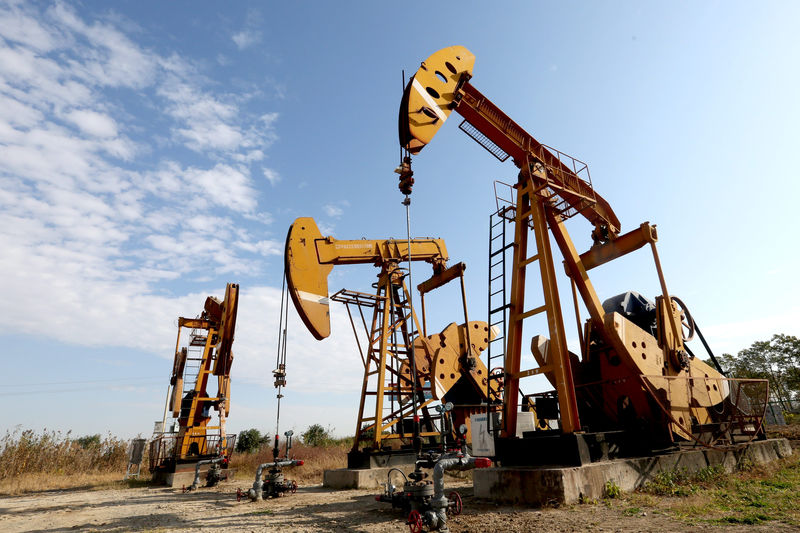(Bloomberg) -- Global oil prices hit the highest level since March as hopes for a vaccine rollout within weeks brightened the outlook for fuel consumption.
Brent crude futures rose 2.5% in London, following a broader market rally after AstraZeneca (NASDAQ:AZN) Plc became the latest company to report a vaccine that protects most people. Vaccinations will “hopefully” start by Dec. 12, Moncef Slaoui, head of the U.S. government’s Operation Warp Speed program, said on CNN. Strong manufacturing out of the U.S. and Germany also buoyed crude.
The prospect of a treatment is starting to reshape the oil futures curve, with some near-term prices rebounding more than later-dated ones, a bullish structure known as backwardation that signals investors expect supply and demand to return to balance. That happened with some so-called timespreads for West Texas Intermediate on Friday, and on Monday Brent’s two nearest contracts flipped to backwardation for the first time since this summer.
“The compression of the timespreads along the futures curve has come with the strong gains in the prompt price, fueled by Covid-19 vaccine optimism,” said Harry Tchilinguirian, head of commodity-markets strategy at BNP Paribas (OTC:BNPQY) SA. The strength at the front of the curve “reflects the tightening of supply availability driven by OPEC+ voluntary supply cuts and strong demand for crude from Asia.”
The surge in crude prices has accompanied a slew of positive updates from pharmaceutical companies on their progress toward a Covid-19 vaccine. The broad market euphoria amid vaccine developments has led Brent crude futures to notch a nearly 23% gain so far this month, even as U.S. hospitalizations of Covid-19 patients rises to the most since early April. Renewed virus lockdowns in Europe have pushed the region’s economy into another contraction.
Meanwhile, Saudi Arabia confirmed that Houthi rebels in Yemen targeted one of its oil facilities in northern Jeddah province. The early Monday attack caused a fire at an oil tank inside a fuel-distribution center, the kingdom’s energy ministry said.
“The overall ‘risk-on’ sentiment is being driven by more positive vaccine news this weekend, and oil prices in particular are being propelled higher by aggressive ‘short’ covering, especially in the ICE (NYSE:ICE) Brent contract,” said Ryan Fitzmaurice, commodities strategist at Rabobank. On top of further short covering, “the oil market will be focused on the OPEC+ meeting which is set for next week and which will likely begin to garner a great deal of attention as the week goes on.”
The firming of the oil futures curve is a sign that the market expects a rapid tightening of supplies ahead, RBC analysts Michael Tran and Helima Croft wrote in a report. The move higher has been one of the largest in recent years, they said.
Still, with inventories at the Cushing, Oklahoma, storage hub nearing levels rarely seen on a historical basis, the forward curve for WTI is overvalued, they said. The storage hub is 3.83 million barrels shy of levels seen in May after prices crashed.
Meanwhile, WTI’s discount to Brent futures widened on Monday to its largest gap since late July, setting up a better backdrop for U.S. crude exports. The deepening of the spread comes amid growing expectations for OPEC and its allies to extend current output cuts next year.
“It would be more supportive for Brent because it is really more dependent on OPEC, where WTI is based more on Cushing,” said Tariq Zahir, managing member of the global macro program at Tyche Capital Advisors LLC. “Cushing levels are not full, but are pretty darn close.”
©2020 Bloomberg L.P.

